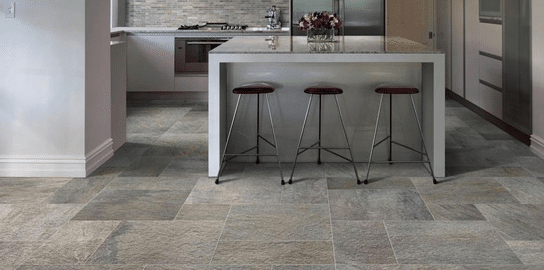The word “rectify” in itself conveys the thought of making something right or refining something. Thus, rectified tiles are those that manufacturers mechanically finish on all sides after the firing process to make sure they are all precisely uniform in size or truly square. When tiles are cut prior to firing and then baked, as is usually done, there is more room for slight discrepancies in the tile size due to shrinking during the firing process.
When Do Manufacturers Generally Rectify Tiles?
Manufacturers often use the rectification process for larger tiles and sometimes when they want to use large and small tiles together in a pattern. When people use rectified tiles in home décor it gives the room a more modern edge. People also call rectified tiles “sharp edge” tiles.
On the other hand, people call tiles that are non-rectified “cushioned edge”, “non-rectified edge”, “soft edge”, and “pillow edge”. As you can imagine from the names, these types of porcelain tiles soften the look of a room.
Benefits Of Rectified Tiles
The modern look created by rectified tiles is due to the fact that you can place the tiles much closer together at a minimum spacing which is 1.5mm. This tighter joint space means that the grout lines are less visible, and even the amount of grout used throughout the installation is much less.
When you use wider grout joints, the grout is no longer merely used to keep the tiles in place but it actually becomes part of the décor. Moreover, if the grout does not fit in with the overall scheme it can greatly reduce the aesthetic appeal of the design. Another factor to keep in mind is that if the grout becomes stained, dirty, or discolored, this too will detract from your design.
However, rectified tiles will generally cost a bit more. This is because of the extra step of cutting the tiles down to size.
Visit our TFO Sydney showroom and see our wide range of tiles at the best prices possible or visit our online tile store today.


